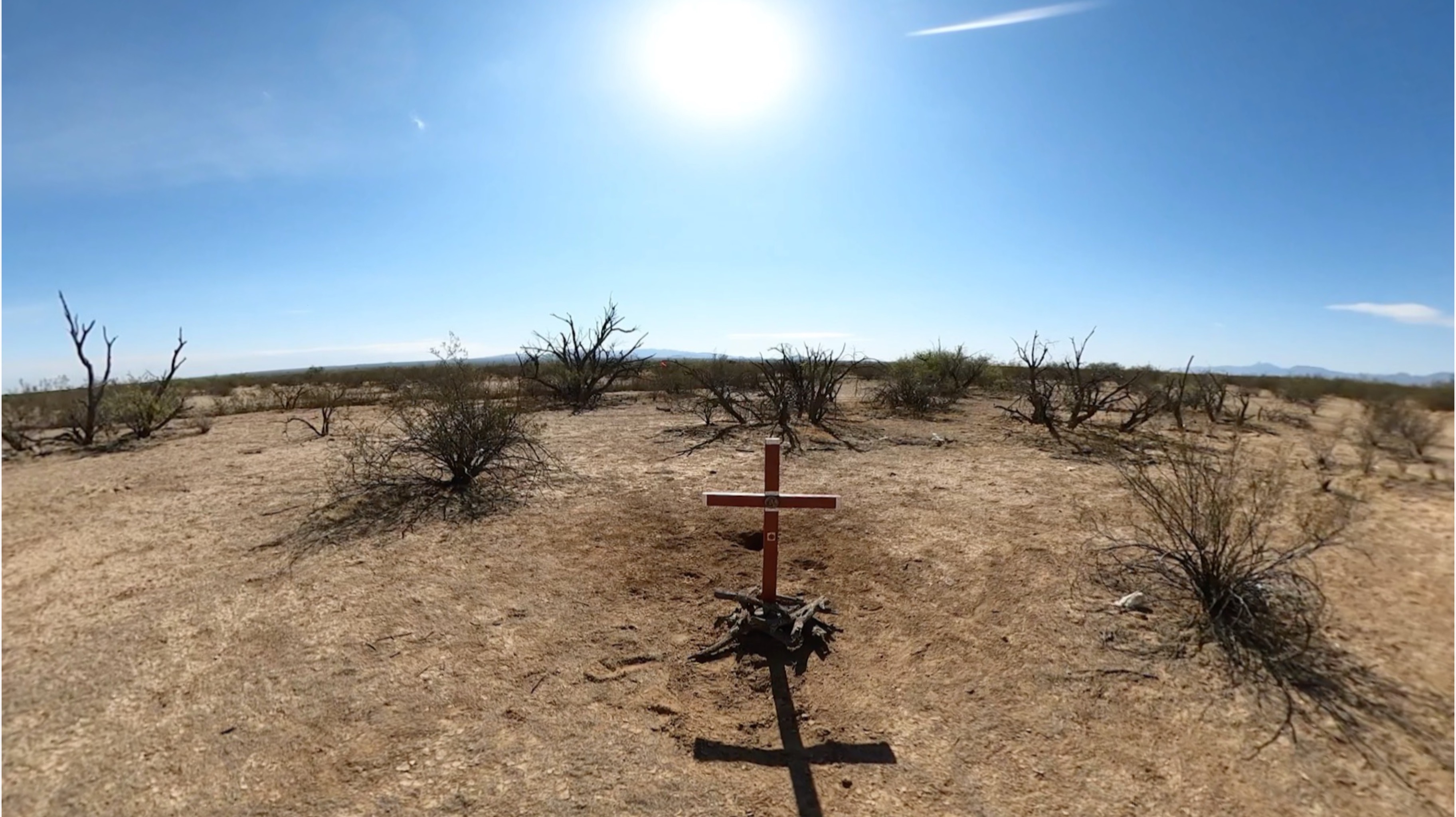Featured in many of the videos in Vistas de la Frontera are crosses made, and placed, by Columbian artist Alvaro Enciso. Beginning in 2012 Alvaro has placed crosses in the Sonoran Desert for migrants who have died crossing the border. His project, Donde Mueren los Sueños (Where Dreams Die), makes, as he says, the invisible tragedy of migration visible. Accompanied by volunteers from the Tucson Samaritans, Alvaro journeys into the desert every Tuesday to plant a cross for migrants. For Alvaro, the cross is not a religious symbol but a mode of remembrance that raises questions about what happened in that particular spot as well as, a means of recognition for the person who died there. These trips often consist of long car rides to remote spots, navigation to the specific area, and the labor of digging a hole to hold the cross itself. Needless to say, Vistas de la Frontera would not have been possible without Alvaro’s guidance, knowledge, and support. In the year I spent accompanying Alvaro on his trips he taught me how to navigate the landscape, how to look for traces of migrant movement, and the importance of returning to sites to recognize the people who have died as a consequence of policy. Each cross is a reminder of the violence of the border itself and the people who have died in the name of national security.
While many of the videos feature crosses placed by Alvaro Enciso, not all the spots are marked by a physical memorial. Many are not, as crosses are often vandalized, stolen, or in areas where Alvaro has not yet gone. Regardless of why a cross may or may not be present, the space is changed by the effects of loss which are felt beyond physical markers. The camera is placed deliberately suggesting that the spot itself is distinct from the surrounding areas. Most videos show the environment as it existed in the moment when the video was taken, illustrating how the place has persisted after the death that happened there. The site may or may not be unchanged physically, but it remains perpetually marked by the loss of life that happened there. Further, in Visas de la Frontera it is augmented as a means of memorial, which makes visible the effects of state violence in the borderlands.

The literal dismantling of migrant bodies in the desert is mirrored by the lack of acknowledgment that surrounds many of these deaths. Migrant deaths are under reported, ignored, and unmourned. Thousands of people have died, but there is little public acknowledgement about the damage that Prevention through Deterrence has done and continues to do. Instead, these losses are framed as a lapse in personal judgement and a natural consequence of border policy. The refusal to recognize those who have died is part of the United States’ continued border enforcement which is much quieter than a wall, and far more deadly.